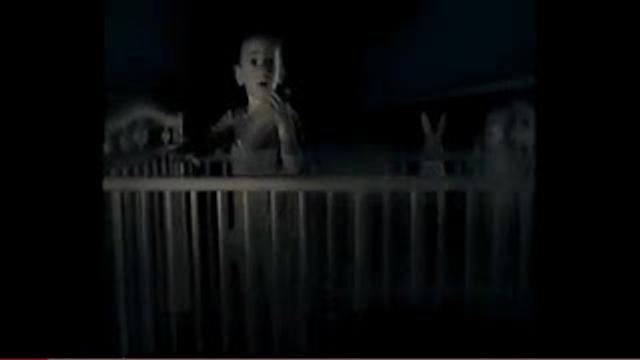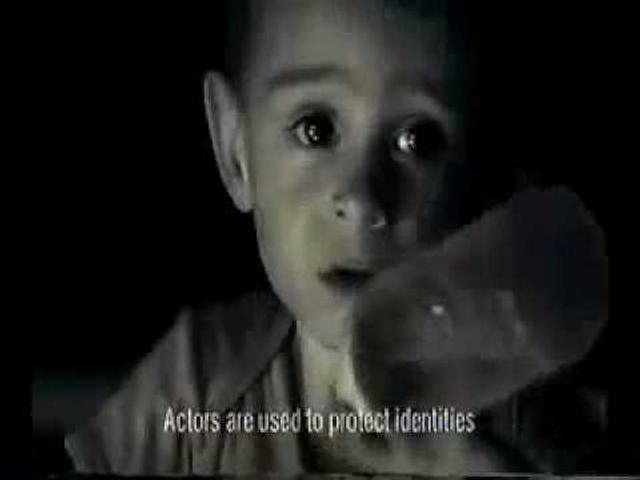NSPCC ‘Open Your Eyes’ direct response TV ad
- Exhibited by
- Giles Pegram, CBE
- Added
- June 28, 2018
- Medium of Communication
- TV advert
- Target Audience
- Type of Charity
- Children's
- Country of Origin
- UK
- Date of first appearance
- 2001
SOFII’s view
This is another iconic, groundbreaking direct response TV advert from British children’s charity the National Society for the Prevention of Cruelty to Children. This case study shows how seriously the NSPCC took its mission, as Giles Pegram explains the careful preparations and empathetic conditions of the advert’s recording, in the face of considerable internal opposition. The result is a powerful, emotionally resonant advert that presents the NSPCC’s need in stark terms, generated significant donations but without causing distress to either donors or beneficiaries. Which should be every NGO's mission.
Summary / objectives
To recruit new donors using direct response TV, in the face of considerable opposition.
Creator / originator
WWAV Rapp Collins
Background
Harold Sumption, my hero, said: ‘present the need powerfully, not to shock, but to involve.’
Of all the ads I was responsible for, this was the one that most met Harold’s criteria and it was greatly successful.
It was heavily criticised, including by an acknowledged consultant paediatrician who was an NSPCC trustee and so was taken very seriously.
It did indeed ‘present the need powerfully, not to shock, but to involve.’ and had a great response. But at what cost to the child?
- From a day’s filming, the director identified one powerful image, just two seconds long, just part of the constant changes of expression in a toddler.
- It was then drawn out by fairly simple technology to a total of 21 seconds, including a still at the end of six seconds. It was then very powerful indeed but bore no resemblance to the one day’s actual filming.
- Because I wanted to continue with a highly successful ad it was important to address the incorrect interpretations of the filming session. Our director of services himself directly intervened. I am deeply grateful to him.
- A qualified nurse had been present at all times, solely to look after the well-being of Miles.
- Miles’s mother was there at all times. Our director of services met her and established beyond doubt that there had been no cruelty or distress at any point in the filming.
- Miles was also interviewed at a later date by our director of children’s services. By then a teenager, he was thrilled that he should have had such an impact and still talks about it. He was a famous actor. Despite being given much opportunity, he has no recollection of being at all distressed by the filming.
Special characteristics
There are ways to present the need powerfully, not to shock, but to involve that do not distress the beneficiary, nor distress the potential donor.
Influence / impact
The advert was a success. And as important was the careful negotiation with the trustee/consultant paediatrician. The ad continued.
Results
The NSPCC's direct response TV advertising (DRTV) programme in the financial year from March 2001 to April 2002 acquired 60,000 new donors, the majority of which gave on a regular basis.
A colossal 70 to 75 per cent of the new donors signed up to paperless direct debit (PDD), which allows supporters to give their bank details over the phone without having to fill in physical donation forms. Around 20 per cent requested a direct debit pack to be sent to them, of which only half supplied and returned their details in the post.
Surprisingly only five to 10 per cent of the audience made a cash donation over the phone, proving that PDD was a winning formula on this occasion.
The NSPCC ran three DRTV ads in rotation entitled 'Freeze Frame', 'Open Your Eyes' and 'Hospital Baby'. The 90-second ads were topped and tailed by 10-second bursts to boost the impact of the ad.
Tim Hunter, head of direct marketing at NSPCC said at that time,
'Ads tire. In order to keep the activity working at the same level, you have to replace them to combat that 'creative tire'. But rather than totally dropping an ad, we expand its life expectancy by not making the ad do the whole job, so it's not on every spot we buy.'
In the same period, the NSPCC's 'Open Your Eyes' ad, the longest running of the three executions, produced a return on investment of 1.6, meaning that for every £1 spent on the creative, the charity received £1.60 in return.
‘That may not sound great, however, you need to compare that with a cold mail campaign, where lots of charities will get around 80 to 90p back in the first 12 months. To be more than breaking even when you're recruiting new supporters is a very healthy return.’


Also in Categories
-
- Broadcast

















